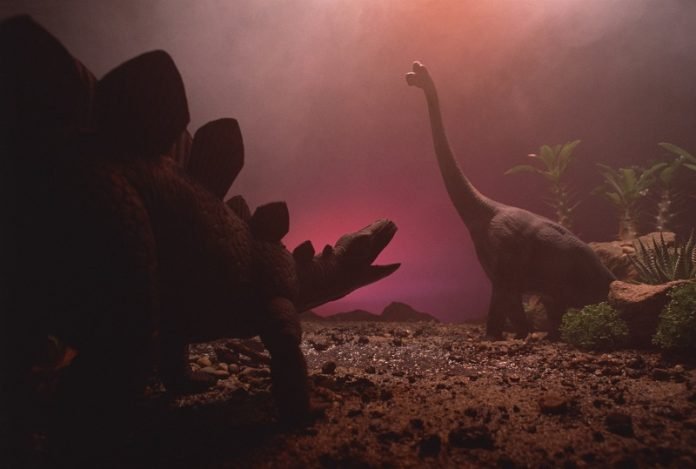
Long ago, our planet witnessed the mysterious disappearance of dinosaurs, those enormous creatures that once roamed the Earth.
For a long time, we believed that a giant meteorite crashing into Earth was the main reason for their extinction.
However, a new study brings a twist to this tale, suggesting that massive volcanic eruptions might have played a significant role too.
This intriguing study, featured in the journal Science Advances, comes from a team of international researchers, including Professor Don Baker from McGill University’s Department of Earth and Planetary Sciences.
Their research focused on the Deccan Traps, a large area in Western India known for its extensive volcanic activity.
Imagine an eruption so massive that it spewed out a million cubic kilometres of rock!
This event, which occurred around 65 million years ago, might have been a crucial factor in altering the global climate.
The researchers traveled worldwide for this study, from the rocky terrains of the Deccan Traps to laboratories in England and Sweden. Their mission?
To understand how these volcanic eruptions impacted the Earth’s atmosphere and climate.
In their labs, the scientists examined the amount of sulfur and fluorine that these eruptions might have released into the atmosphere. Their findings were quite remarkable.
They discovered that the amount of sulfur released could have significantly lowered temperatures around the globe. This phenomenon, known as a ‘volcanic winter,’ might have created a series of harsh and cold conditions worldwide.
Professor Baker explains that these volcanic winters, which could have lasted for decades, likely made the planet an incredibly challenging place for life to thrive.
Such unstable climatic conditions would have been tough for plants and animals, setting the stage for the dinosaurs’ extinction.
This finding adds a new layer of understanding to this significant event in Earth’s history, an event that eventually led to the rise of mammals and, much later, humans.
To uncover these secrets from ancient rocks was no easy task. The team at McGill University developed a novel technique, somewhat similar to cooking pasta.
Imagine boiling pasta at home: you add salt to the water, and some of it gets absorbed by the pasta. By analyzing the pasta, you can estimate how much salt was in the water.
In a similar manner, the researchers could determine the amount of sulfur and fluorine in the volcanic rocks, which in turn gave them an idea of how much of these gases were released during the eruptions.
This international study involved scientists from Italy, Norway, Sweden, the UK, the United States, and Canada. Their collective efforts have not only shed light on a pivotal moment in our planet’s history but also have implications for our understanding of climate change today.
The study, titled “Recurring volcanic winters during the latest Cretaceous: Sulfur and fluorine budgets of Deccan Traps lavas” by Callegaro et al., marks a significant step in unraveling the Earth’s ancient mysteries.
It also helps us better understand our changing climate, reminding us of the powerful forces that have shaped our planet over millions of years.
Source: McGill University.



